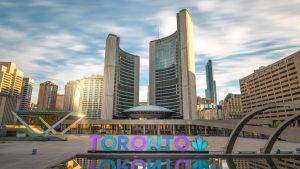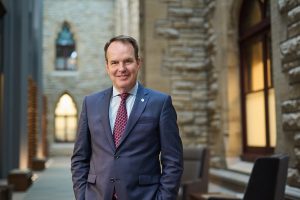TORONTO – Ontario Premier Doug Ford swapped his energy and education ministers in a cabinet shuffle Thursday and brought a minister who resigned over the Greenbelt controversy back into the fold.
Ford’s changes come as the legislature rose for an extended summer break — to late October — and as the premier has been fuelling early election speculation by refusing to commit to waiting until 2026 to go to the polls.
Stephen Lecce moves from education, where he has served as minister since 2019, to energy, swapping portfolios with Todd Smith, who has been the minister of energy for the past three years.
Lecce, who butted heads with teachers unions many times over the years, said he was honoured to serve in that role but is excited to lead the re-titled Ministry of Energy and Electrification.
“In order to grow the economy, with millions of people coming to our shores and significant industry moving to Ontario, including the fact that under our previous leadership, we’ve put (Ontario) on the map as one of the primary destinations for EV construction,” he said Thursday.
“We need a significant supply of affordable, reliable energy for the people of Ontario. We will build the energy capacity we will need to supply the energy to grow our economy.”
Several new people have been promoted into cabinet, with new associate minister positions being created and some other ministries such as Agriculture, Food and Rural Affairs being split into two, bringing the size of cabinet to 36 people.
One of the new faces in cabinet is Mike Harris, son of the former premier, and he takes over the red-tape reduction portfolio, which has been vacant since Parm Gill resigned in January to run for the federal Conservatives.
Steve Clark, who resigned last fall as municipal affairs and housing minister amid the Greenbelt controversy, has been appointed government house leader. It’s not a cabinet position, but is a key role within the government, as that person frequently fields the questions in question period.
Ford initially stood by Clark last summer as the Greenbelt land swap unravelled with two devastating probes.
The integrity commissioner found Clark violated ethics rules during a process that was marked by “unnecessary hastiness and deception.”
Integrity commissioner J. David Wake found Clark’s chief of staff — who also resigned last summer — was the driving force behind the land swap that benefited certain land developers, and that the minister failed to oversee his staff.
Auditor general Bonnie Lysyk found that developers who had access to Clark’s chief of staff, Ryan Amato, wound up with 92 per cent of the land taken out of the Greenbelt. Amato has denied all wrongdoing.
The RCMP has since opened up a criminal investigation into the Greenbelt land swap.
New Democrat Leader Marit Stiles said the moves mean little after a year of scandal and policy reversals.
“Playing musical chairs at the cabinet table isn’t going to fix this mess,” Stiles said. “We now have the most bloated cabinet in the history of Ontario, with the biggest premier’s office, the biggest deficit and people are struggling more than they ever have before.”
Stiles also took aim at Clark’s return to prominence.
“It’s deeply concerning,” she said. “Let’s not forget that this was a minister who resigned in disgrace because of his central role in the government and Doug Ford’s Greenbelt corruption scandal and now he’s going to be put in charge of it with pretty enormous responsibility.”
Liberal Leader Bonnie Crombie criticized Ford’s cabinet choices, including giving Clark more responsibilities and not promoting enough women.
“Doug Ford is keeping his friends close, and his cronies even closer,” she wrote in a statement.
“He’s created the biggest cabinet in history – using your money – and he only included nine women.”
Paul Calandra had served as government house leader since 2019. He sheds that role but retains the Ministry of Municipal Affairs and Housing, after taking over from Clark. One of his first orders of business was to walk back the changes to the Greenbelt.
Calandra had worn multiple hats in the government, including quietly taking over as red tape minister when Parm Gill left for the federal Tories in the spring.
The ministers of health, finance, colleges and universities, and environment are among those who are staying put.
Stan Cho moves from long-term care to become minister of tourism, culture and gaming, with responsibility for OLG. Neil Lumsden has been minister of tourism, culture and sport since 2022 but will now simply be minister of sport.
Natalia Kusendova-Bashta moves from the backbenches into long-term care.
Lisa Thompson, who had been minister of agriculture, food and rural affairs, is now only minister of rural affairs, while Rob Flack becomes minister of farming, agriculture and agribusiness. He previously served as associate minister of housing.
That role now goes to Vijay Thanigasalam, who previously served as associate minister of transportation. That role appears to have been done away with, but several new associate minister positions were created.
Stephen Crawford enters cabinet as associate minister of mines, Trevor Jones joins the cabinet table as associate minister of emergency preparedness and response, and Nolan Quinn becomes associate minister of forestry.
Sam Oosterhoff, who became Ontario’s youngest-ever member of provincial parliament in 2016 when he was elected in a byelection at the age of 19, is now in cabinet as associate minister of energy-intensive industries.
©2024 THE CANADIAN PRESS











Recent Comments
comments for this post are closed